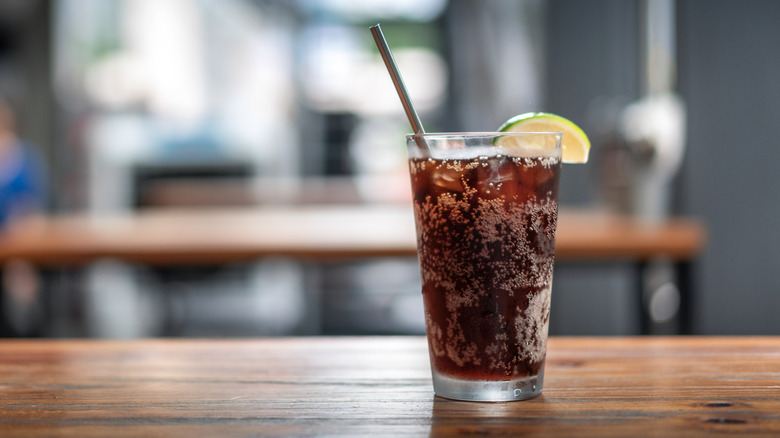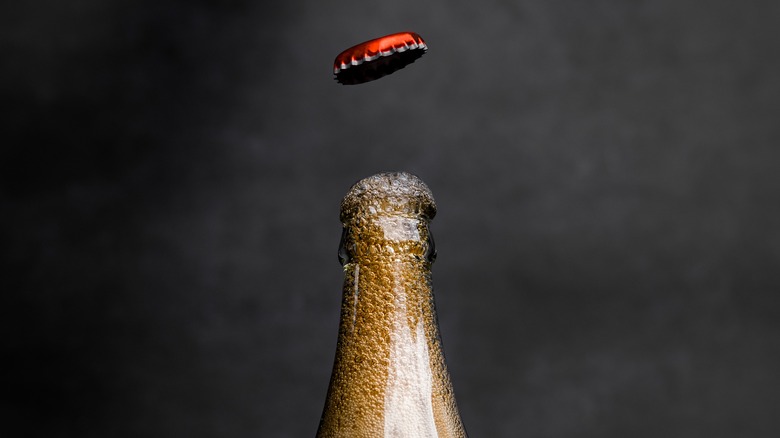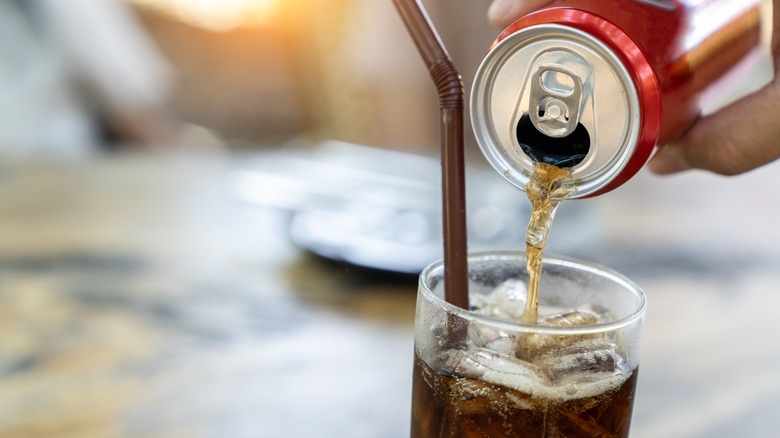The Possible Reason Some Americans Refer To Soda As 'Pop'
What's that you say? You'd like a can of pop? Asking for one in some parts of the U.S. might yield some odd looks. Try saying 'soda' instead, because what you call that bubbly beverage is based on geography, and how the fizzy origins of soda unfolded there. Several theories on the genesis of 'pop' exist, but they all seem to suggest it represents the sound made when pressurized gases escape upon opening a bottle. But, 'pop' may have arisen from "pop goes the cork," as written in 1812 by English poet Robert Southey in a letter.
It's not commonly understood why the term pop became popular in the Midwest and Northwest — though Chicago magazine opined in 2023 that pop's linguistic growth is owed to a Detroit bottling company. In 1907, Russian immigrant bakers Ben and Perry Feigenson started using frosting to flavor carbonated water and selling it from the back of a horse-drawn wagon. The drinks became so popular, the brothers built a bottling plant in Detroit. Now known as Faygo, it was only sold in Michigan until the 1950s. In the history of the soda, um, pop company, "The Faygo Book" author Joe Grimm says the company insisted people call their beverage 'pop.'
Other effervescent monikers
While the word pop may be from the sound of old fashioned glass bottle lids popping off, etymologists are not in agreement about how carbonated drinks became known as 'soda.' Some say the word originated from the Italian sida or Medieval Latin soda referring to the saltwort plant from which an alkaline substance once used in soap making was derived. Others suggest the word is a shortened version of sodium, a basic ingredient in carbonated drinks.
Whichever is true, the fact is that before bottling techniques were perfected to protect the carbon dioxide from fizzling out, people in the Northeast were introduced to soda water (later shortened to soda) primarily at soda fountains — not in bottles. The first such fountain was introduced in 1811 by Yale chemistry professor Benjamin Silliman in New Haven, Connecticut. Though we all know there's no real difference between soda and pop, outside the Northeast, most folks in Florida, California, and in some areas of the Midwest near Milwaukee and St. Louis also refer to the drink as soda.
The historical journey of carbonated beverages
It's well-documented that Midwesterners are more apt to say 'pop' — while Northeastern denizens of the United States are more likely to say 'soda.' Southerners? 'Coke.' It is pretty well-accepted that southerners refer to all fizzy drinks as 'coke' because the formula for Coca-Cola was invented by a pharmaceutical chemist — Dr. John Stith Pemberton — in Atlanta in 1886. Among the oldest sodas still on the market, the first Coca-Cola bottling plant began operating in 1899 in Chattanooga, Tennessee. The presence of a small amount of cocaine in the original recipe for the cola is why some small pockets of the deep south might still refer to it as 'dope.'
According to Britannica, carbonated beverages being referred to as 'soft drinks' was a way to make a distinction between non-alcoholic brews and alcoholic ones. Soft drinks were suggested as substitutes for beer, whisky, and other distilled or fermented drinks. And though its use is fading in eastern Massachusetts, primarily Boston, an older generation might still refer to that effervescent potion as tonic.


